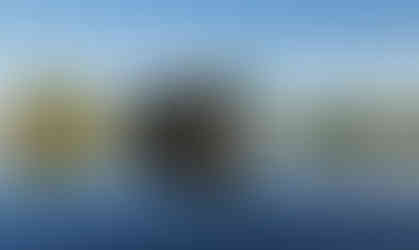Siem Reap: Kampong Phluk Floating Village & Sunset Cruise on Tonle Sap
- MaxiMiserMom
- Sep 19, 2022
- 5 min read
Tonle Sap is the largest freshwater lake in Southeast Asia. Its size varies according to the wet and dry season. During the wet season from May to October, its surface area can reach a maximum of 16,000 square kilometres, with rainfall and the inflow of water from the Mekong River contributing to its expansion. However, its surface area can shrink to only 2,700 square kilometres during the dry season when water from the lake flows out into the Mekong River instead. At the end of the dry season, the water level in Tonle Sap can be as low as about 1 metre deep.
An estimated 1.2 million live in the Tonle Sap area, residing in boats and houses built on stilts. Our trip coincided with the wet season in Siem Reap, which was the best time of the year to visit one of these floating villages in Tonle Sap.

Online reviews about visits to these floating villages were polarized between horror stories and life changing events whereby the visitors have nothing but praises for the trips. I related my concerns to our guide, Bunpheng of Angkor Doors, and he assured me that our group need not worry about getting ripped off by boatmen or harassed by villagers asking for money. He said people who had bad experiences at the floating villages were independent travelers without official guides.
Bunpheng organized our boat ride and reminded us to ignore anyone who approached us for money for the children's education because public schools were free in Cambodia. Villagers who approached tourists for money for books, stationery etc for the children were not actually giving the items to the children. They were just profiting from the sales.
For our trip to Tonle Sap, Bunpheng charged our group of 10 a sum of USD210.00 (i.e. USD21.00 per person), which included return transport by 25-seater air-conditioned bus and the boat ride on Tonle Sap. I noticed that most tour companies commenced their tour of Tonle Sap before 1400 hrs, but Bunpheng's tour started at 1500 hrs. As it turned out, 1500 hrs was perfect because it gave us ample time to wash up and have lunch after our bicycle tour of the countryside before going to Tonle Sap, and the timing was spot on for catching the sunset on the lake.
At 1500 hrs, we were picked up from our hotel and driven to where our boat was docked. The drive took close to 1.5 hours, with a brief toilet break. We were then taken to Kampong Phluk floating village by boat. Within 15 minutes of the boat ride, wooden houses on stilts and colourful wooden boats started appearing on the lake.
We disembarked at Kampong Phluk at 1700 hrs, just when school children were being dismissed for the day from the village school, and the monk was sounding the gong to notify the villagers that chanting was about to commence at the monastery.
We watched the flurry of activities in the village with amazement and amusement. Children were playing football, riding oversized bicycles, playing on the street without their clothes on, walking home barefoot, etc. Several school children looked at us with curiosity and struck up conversations with us in simple English, asking what our favourite colours were and so on. Words cannot begin to describe how their innocence and purity touched us that very moment.
Perhaps it was the time of the day we visited, but we saw more children than adults at the village. Could it be that the adults were busy at work somewhere, out fishing on the lake, or cooking at home?


We were walking about the village when we saw 2 signs outside a classroom which caught our attention. The first said "Pagna Cambodian Education Fund - Give the opportunities to rural children" and the second was a wish list for donations to the school. We asked Bunpheng about the education fund and he confirmed that it was through a similar non-profit organization running English classes at a monastery that he got to learn English when he was young.
At our behest, Bunpheng approached the teacher and asked if there was anything our group could do to help. They exchanged some words before the teacher turned to us and said the best thing we could do to help was to spend some time in the classroom to interact with the children in English. Nothing was mentioned about monetary donations at all. The teacher said, if the children could understand and hold a conversation with us, the experience would instill confidence in them in using the English language and would help them immeasurably. It was something we hadn't thought of, and we couldn't agree more.
Our group entered the classroom, split ourselves up and started interacting with the children in English, asking them for their names, questions about their hobbies and favourite soccer team, whether they could swim, etc. Their faces lit up when they realized they could understand our questions, and were able to answer them. They were holding a simple conversation in English with total strangers, and not with just their teacher. They were mesmerized when my dad sang the class a song, and they returned the favour by singing a song of their own to us in English.
The few minutes we spent in the classroom with the kids brought laughter, joy and confidence. It was without a doubt the most meaningful thing we'd ever done on a trip anywhere in this world. Like Bunpheng said, help need not come in the form of monetary donations. The best help which one can give is actually our time.

We left Kampong Phluk that day with an immense sense of accomplishment and satisfaction. We'd successfully reached out a helping hand to the children, and they in turn taught us to appreciate the simpler things in life.
A short distance after pulling away from the dock at Kampong Phluk, our boat passed a church. It was the first church I noticed in Cambodia, a country where only 1% of the population is Christian.

We also passed Kampong Phluk's police post. The policemen were thrilled to see a tour boat go by. They called out to us, waved and posed for pictures enthusiastically. Certainly the most happy-go-lucky group of police officers we've ever come across in our life!

We passed several floating restaurants, or rather structures which were once restaurants. Bunpheng said that the restaurants used to cater to tourists coming to enjoy the sunset on the lake, but had all closed down due to COVID-19. Our boatman offered to let us watch the sunset from the metal roof deck of his boat instead.
As we waited for the sun to set, women on small wooden boats approached us with can drinks and snacks for sale. Watching the sunset at Tonle Sap with a cold drink in hand was heavenly. The vast freshwater lake appeared to merge with the pale blue sky into a single canvas, and at dusk, an unseen paintbrush made broad strokes of pink, peach and gold across it.



We were there the evening before Mid Autumn Festival, and were rewarded with not just a stunning sunset but a lovely moonrise as well.

On our way back to the dock, we witnessed an unusual phenomenon, a column in the sky comprising of hundreds or possibly thousands of bats leaving the roof of the monastery at Kampong Phluk in search of food. Bunpheng said for years the bats had lived under the roof of the monastery, damaging the beams severely. They'd leave the monastery at around 1830 hrs daily and return again at around 0430 hrs. It was a strange sight indeed. Unfortunately, we weren't able to capture any good pictures of the column of black bats in the darkening sky.
Our trip to Tonle Sap exceeded our expectations in more ways than one. I was glad we stuck to our guns to make the trip, and were not dissuaded by negative reviews online.
We made it back to our hotel close to 2030 hrs, just in time for my pre-booked Khmer full body massage. A perfect ending for a magical day.
































Comments